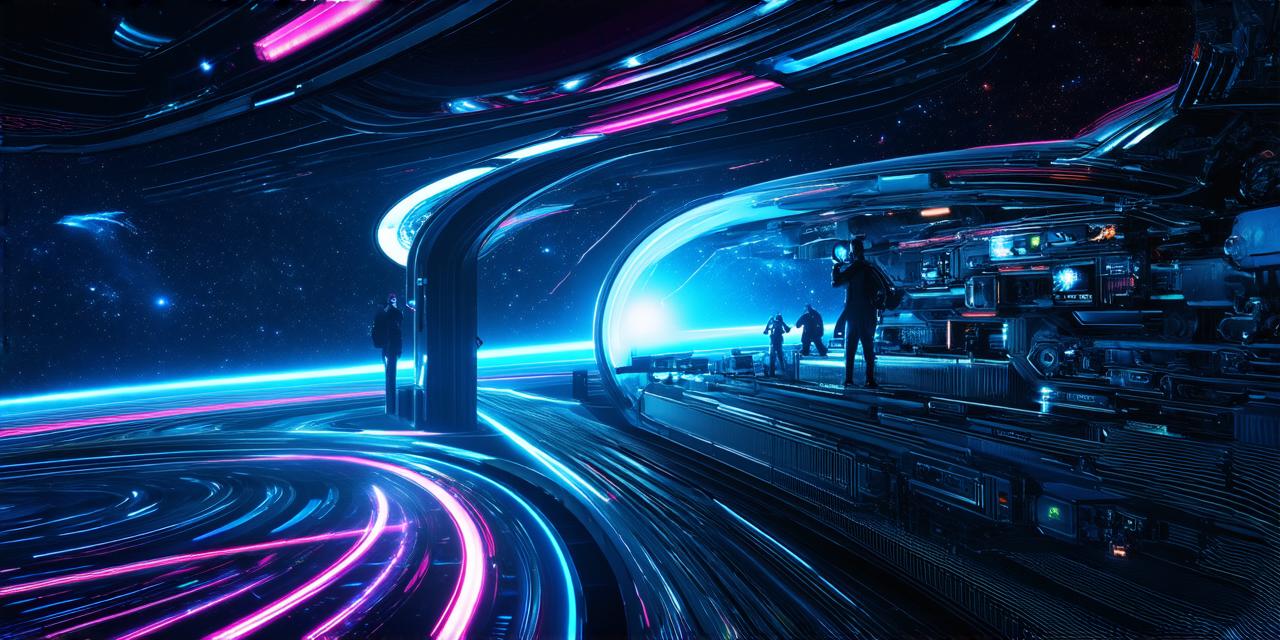What is Augmented Reality (AR)?
Augmented reality is a technology that allows digital content to be overlaid onto real-world environments. This means that users can see digital objects in the real world, such as graphics or animations, without the need for specialized equipment. AR is commonly used in mobile apps, games, and educational tools.
One of the most well-known examples of AR is Pokemon Go, a popular mobile game that uses AR to bring virtual creatures into the real world. Users can see these creatures in their surroundings, and they can interact with them by throwing virtual balls at them or capturing them.
Another example of AR is in the field of education. Teachers have been using AR to create interactive lessons that allow students to explore real-world environments in a digital way. For example, students can use an AR app to see the solar system or dissect a virtual frog.
What is Virtual Reality (VR)?
Virtual reality is a technology that allows users to enter a simulated environment and experience it as if they were actually there. This is achieved through the use of sensors, headsets, and other specialized equipment that track the user’s movements and provide a realistic visual and audio experience.
Virtual reality has been used in many fields, including gaming, entertainment, education, and training. One of the most well-known examples of VR is Oculus Rift, a popular virtual reality headset that allows users to immerse themselves in a digital world.
Another example of VR is in the field of training. For example, pilots can use virtual reality simulations to practice their flying skills in a safe environment. Similarly, doctors can use virtual reality simulations to practice surgeries and other medical procedures.
What is Mixed Reality (MR)?
Mixed reality is a technology that combines AR and VR to create a hybrid experience. This means that users can see digital content in the real world, but they can also interact with it and be fully immersed in a digital environment. MR is still in its early stages of development, but it has great potential for various applications.
One example of MR is Microsoft’s HoloLens, which allows users to see 3D holograms in the real world. Users can interact with these holograms and even manipulate them using their hands or other devices. Another example is Google Daydream, a virtual reality headset that also supports MR by allowing users to see digital content overlaid onto the real world.
Applications of AR, VR, and MR in Virtual Reality Development
AR, VR, and MR are being used in many different applications, including gaming, entertainment, education, and training. Let’s explore some examples.
Gaming:
Gaming is one of the most popular applications of AR, VR, and MR. Games can be created using these technologies to provide users with a more immersive experience. For example, games like Minecraft Earth use AR, while virtual reality amusement parks combine VR with physical environments to provide users with a completely immersive experience.
Entertainment:
AR, VR, and MR are also being used in entertainment to create unique experiences for users. One example is the virtual reality amusement park, which combines VR with physical environments to provide users with a completely immersive experience.
Education:
Education is another field where AR, VR, and MR have great potential. For example, students can use AR and VR to explore historical sites or even dissect virtual animals. Virtual reality simulations can also be used to provide medical students with a safe environment to practice surgical procedures.
Training:
Training is another field where AR, VR, and MR are being used. For example, pilots can use VR simulations to practice flying skills in a safe environment. Similarly, doctors can use VR simulations to practice surgeries and other medical procedures.
FAQs
Q: What is the difference between AR, VR, and MR?
AR allows digital content to be overlaid onto real-world environments, VR allows users to enter a simulated environment, and MR combines AR and VR to provide a hybrid experience.
Q: What are some examples of AR, VR, and MR in gaming?
Games like Minecraft Earth use AR, virtual reality amusement parks combine VR with physical environments, and VR games like Beat Saber use VR to provide an immersive experience.
Q: How is AR, VR, and MR being used in education?
Students can use AR and VR to explore historical sites or even dissect virtual animals, and virtual reality simulations can be used to provide medical students with a safe environment to practice surgical procedures.
Q: What are some examples of AR, VR, and MR in training?
Pilots can use VR simulations to practice flying skills in a safe environment, and doctors can use VR simulations to practice surgeries and other medical procedures.
Conclusion
Augmented reality, virtual reality, and mixed reality are transforming the way we interact with digital content. These technologies have great potential for many different applications, including gaming, entertainment, education, and training. As these technologies continue to evolve, we can expect to see even more exciting and innovative uses of AR, VR, and MR in virtual reality development.
